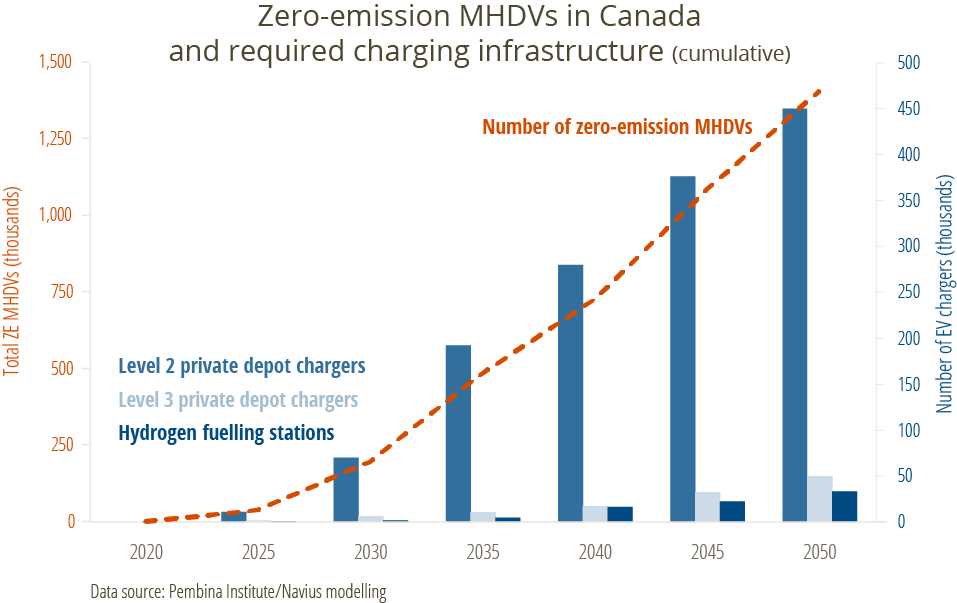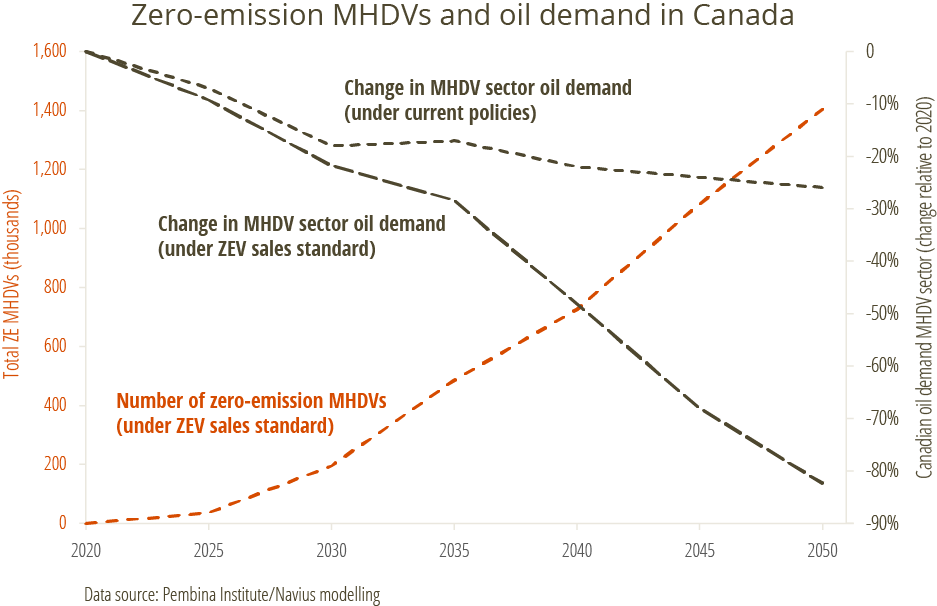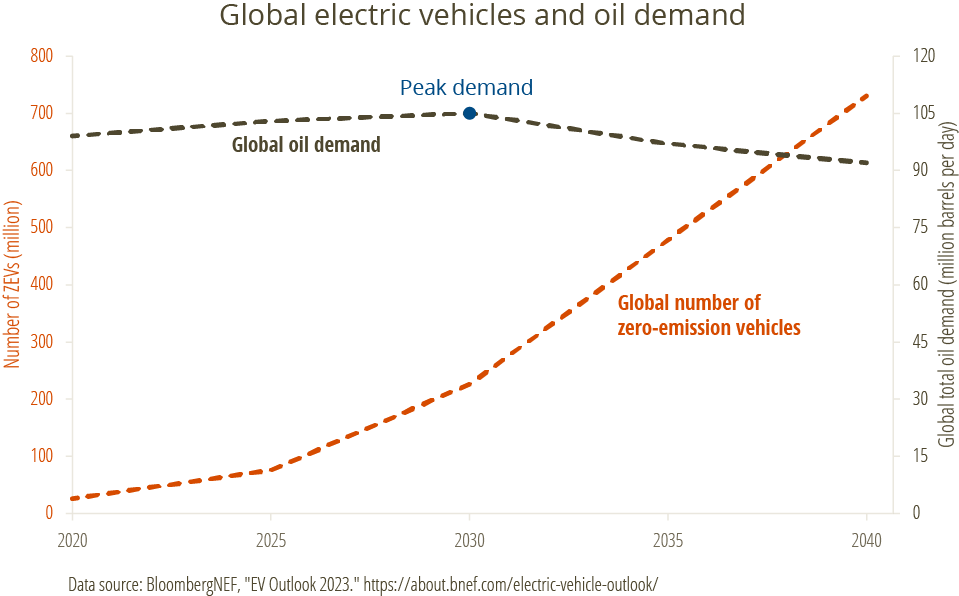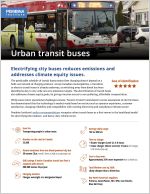
The likelihood of Canada meeting its international obligation to transition to a carbon-neutral economy in 2050 depends in no small part on decarbonizing the transportation sector — the country’s largest source of greenhouse gases (GHGs) after oil and gas.
Within the transportation sector, the most recent data on Canada’s overall emissions show that GHGs generated by medium- and heavy-duty vehicles (MHDVs) continue a relentless upward trend, accounting for 37% of overall transportation emissions and threatening to surpass the emission levels produced by passenger vehicles by 2030.
In response to the growing urgency to implement mandates and timelines to advance the transition to zero-emission MHDVs, the Pembina Institute has developed the ZeroX2040 national strategy, Canada’s Pathway to Net-Zero for Medium- and Heavy-Duty Trucks and Buses, which provides guidance on how Canada can gradually turnover its fossil-fuelled MHDVs to non-emitting ones by 2040.
Broken down into a two-part report series, we offer more than 20 policy recommendations to overcome the current planning gaps and associated market uncertainties concerning the availability of zero-emission heavy-duty vehicles and the infrastructure to support adoption.
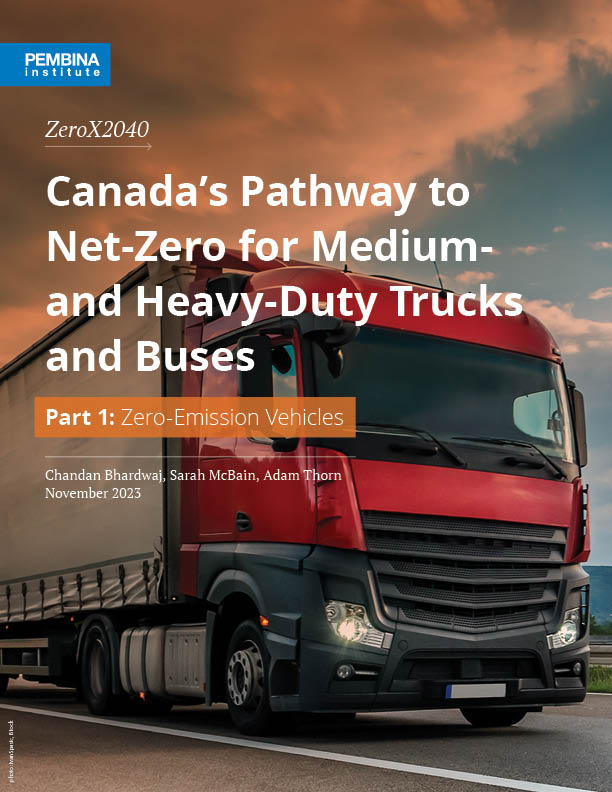 |
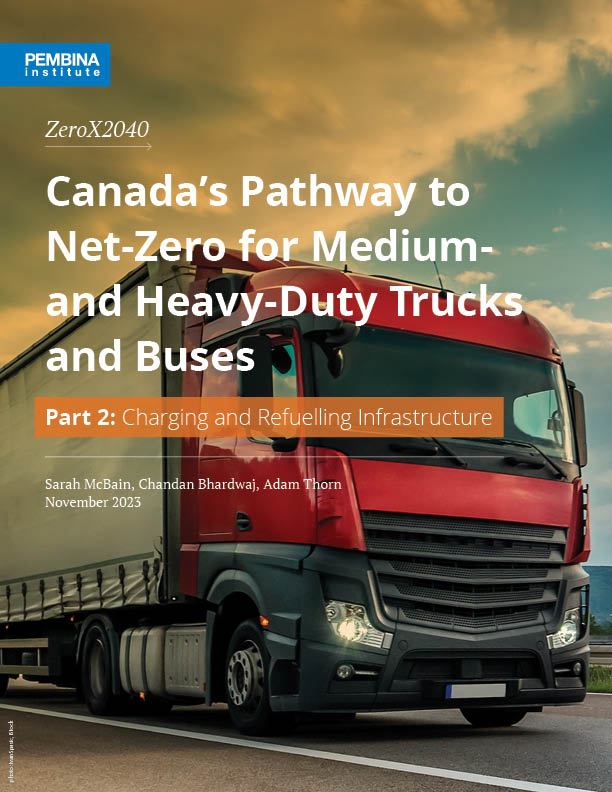 |
Big changes ahead
Efforts to transition to clean transportation in the federal government’s 2030 Emissions Reduction Plan (ERP) include a target, applicable to manufacturers and importers, that 35% of all new sales of MHDVs are zero-emission by 2030, increasing to 100% of sales by 2040 (based on feasibility).
The magnitude of the turnover in the transportation sector that these targets represent cannot be overstated. Assuming the sales goals and timelines are met, as many as 180,000 electric trucks and buses will be on the road by 2030 and 70,000 Level 2 (50 kW or higher) private depot chargers for fleets will need to be installed. The required number of charging and refuelling stations will increase with rising sales and will also need to expand across publicly accessible roadways.
Yet, despite the urgency, scope, and limited time frame, Canada has not provided a credible plan to meet either the 2030 or 2040 milestones. Moreover, the levels of adoption of emission-free trucks and buses are not on track to meet the ERP targets; nor is infrastructure build-out close to where it should be given the timelines.
Recommendations
Central to our recommendations to advance the transportation transition is that Canada implement a strong sales standard. A clear, national standard will determine the speed at which Canada will move from internal combustion to zero-emission trucks and buses. Pembina’s research shows that the most efficient transition pathway is for the government to institute zero-emission MHDV sales requirements based on commercial viability rather than a uniform sales target across all MHDV classes.
The sales standard should stagger new sales targets over time according to vehicle type. The easiest vehicles to electrify are buses and most medium-duty vehicles (such as a box or pick-up trucks); heavy-duty vehicles, especially long-haul trucks, will take longer to transition as technological advances have been slow and have yet to demonstrate market/commercial readiness at scale.
Our strategy twins the sales standard with infrastructure build-out, advising that development sync with the anticipated number of electric and hydrogen-fuelled trucks and buses on the road. A well-planned build-out will see an initial push to install private chargers for buses and medium-duty fleets followed by phased deployment of publicly accessible charging and refuelling stations, with priority initially given to locations that experience the highest electrical load from MHDV charging while also accounting for geographical variability in the pace of zero-emission MHDV uptake.
By implementing our policy recommendations, MHDV carbon emissions would decline from 35 Mt in 2020 to 10 Mt or less by mid-century and would drop by as much as 80% by 2050 relative to 2020 levels.
Visual data
These graphs show three future scenarios. The first shows the magnitude of the shift from fossil-fuelled buses, mid-size trucks and big rigs to ones powered by electricity or hydrogen fuel. The number of charging and refuelling stations must likewise increase significantly to meet growing energy demand.
The second graph illustrates the impact of the anticipated number of non-emitting MHDVs in Canada on oil demand. Under the current policy regime, oil demand in Canada from the MHDV sector will decline by 18% by 2030 relative to 2020 levels. By 2050, oil demand decreases by 26%. Should the federal government implement sales targets for zero-emission MHDVs that are met in full and on time, demand for oil in the MHDV sector would drop by 80% in 2050 relative to 2020 levels.
Globally, electric vehicles are already displacing 1.5 million barrels of oil demand a day as shown on the third graph. Modelling by the International Energy Agency projects oil demand from road transport to peak in 2025 and, by 2030, the projected global EV fleet will displace more than 5 million barrels per day.
